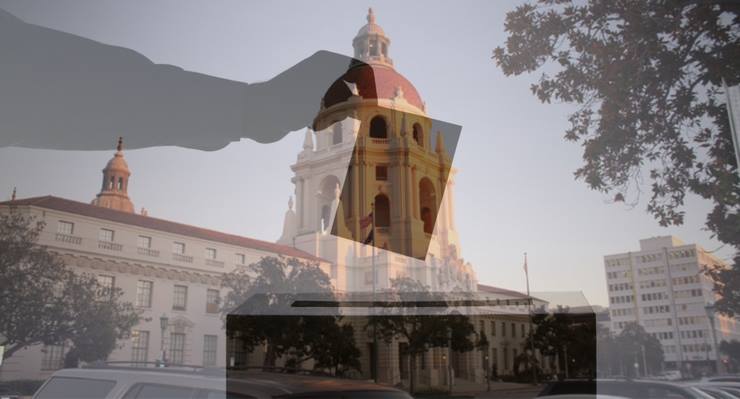The stratospheric news in the science world today is Wednesday’s announcement of the discovery of the Higgs Boson particle – or “God particle†– by a group of scientists that includes physicists from Pasadena’s own Caltech.
For those without a degree in particle physics, the Higgs Boson is a subatomic particle that may help scientists understand why particles have mass and thus be key to unlocking mysteries of the universe.
“This is a momentous time in the history of particle physics and in scientific exploration—the implications are profound,†said Harvey Newman, professor of physics at Caltech. “This is experimental science at its best. A Higgs lookalike would propel us into a new realm of experimentation and physics understanding.â€
It has been one of the longest, most expensive searches in the history of science – a kind of Holy Grail for physicists. Scientists are unsure as yet whether the Higgs Boson, which weighs in at 125 billion electron volts – pretty heavy, they say, for a subatomic particle – fits the Standard Model rule or is a single particle, and possibly the first of many more to be discovered.
Scientists were partying at the Aspen Center of Physics and around the world as the news was announced by webcast from Aspen. Peter Higgs, the University of Edinburgh theorist for whom the boson is named, entered the meeting to a standing ovation.
Maria Spiropulu, a professor of physics at Caltech, has been one of those investigating how to distinguish the Higgs Boson from other possible new particles whose properties are similar to those of the Higgs.
“This discovery is an unparalleled achievement,†she said Wednesday. “Even these early results give us important hints as to how mass in the universe came to be. Together with hundreds of our colleagues, we have worked for decades to reach this point.â€
Caltech has approximately 40 physicists, engineers, and students at the Large Hadron Collider (LHC) in Geneva, working on a number of projects in addition to the Higgs search. The Caltech group is one of the leading groups in the U.S. and in the entire particle physics detector collaboration.
Harvey Newman from Caltech did much of the groundwork in designing the crystal detectors that are now used in the experiment. He and his team also helped develop the worldwide grid of network and data centers that store and process the flood of data coming from the LHC.
“Our targets are ambitious,†he said. “They include probing a vast landscape of particles that could comprise the dark matter of the universe and forces that might even elucidate the cosmological observations of dark energy.
“One of the most exciting aspects of this observation is that the road remains open for a vast range of ‘lookalike’ alternatives, where any deviation would point the way to the existence of other new particles or forces of nature.”
An entire generation of physicists have believed in the existence of the Higgs Boson for half a century without ever seeing it. According to the Standard Model theory, which has ruled physics for 40 years now, the Higgs Boson is the only visible evidence of an invisible force field that permeates space and gives elementary particles mass.
Without this force field, physicists say matter would zoom around at the speed of light, flowing around us like thin air. There would be neither atoms nor life.
In recent times, “HiggsRumors†became one of the most popular hashtags on Twitter. The particle also has its own iPhone game called “Agent Higgs.â€














 0 comments
0 comments


